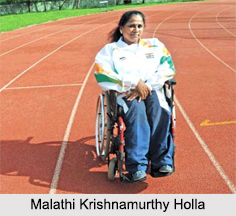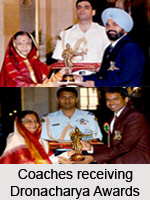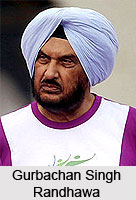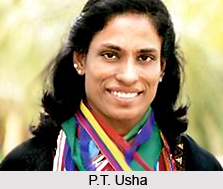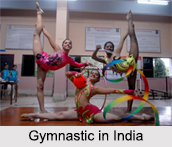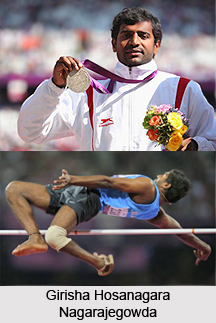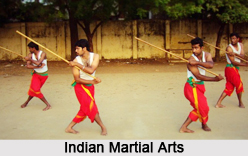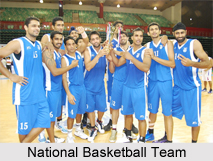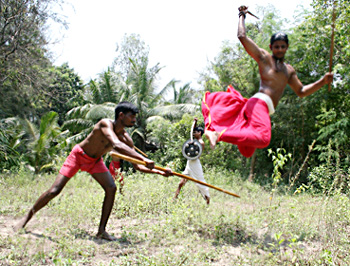 The history of Indian martial arts is traced over a rather long period of development. The earliest martial traditions can be traced back to the 2nd millennium BC. In fact the Agni Purana is arguably the earliest extant manual of Dhanurveda (Sanskrit term for martial arts) which talks about the art of war in five detailed parts. It received due mention in Indian Vedic literature like the Rig Veda, Yajur Veda and Atharva Veda. It describes how to improve a warrior`s individual artistry and kill enemies using various different methods in warfare, whether a warrior went to war in chariots, elephants, horses, or on foot.
The history of Indian martial arts is traced over a rather long period of development. The earliest martial traditions can be traced back to the 2nd millennium BC. In fact the Agni Purana is arguably the earliest extant manual of Dhanurveda (Sanskrit term for martial arts) which talks about the art of war in five detailed parts. It received due mention in Indian Vedic literature like the Rig Veda, Yajur Veda and Atharva Veda. It describes how to improve a warrior`s individual artistry and kill enemies using various different methods in warfare, whether a warrior went to war in chariots, elephants, horses, or on foot.
Several references to Indian martial arts are found in the Mahabharata, especially in the prolonged battle between Arjuna and Karna who use bows, swords, fists and even trees and rocks; or in unarmed battle where two fighters box with clenched fists and deal kicks, finger strikes, knee strikes and head butts.
Other boxing fights are narrated in the Ramayana. Among the varied Indian martial arts, the Malla-yuddha was regarded as a prominent martial art in that era. It is a form of combat wrestling codified into four forms, which is described, in the ancient Indian epics as the fighting style of warriors such as Bhima.
Various martial art forms are depicted graphically in classical and literary works. The earliest written evidence of martial arts in Southern India dates back to the Sangam literature of Tamil Nadu of about the 2nd century BC to 2nd century AD. The Akananuru and Purananuru describe the martial arts of ancient Tamilakkam, detailing the use of spears, swords, shields, bows and the Silambam in the Sangam era. References to fighting are also found in ancient Buddhist texts such as the Lotus Sutra which refers to a kind of boxing art as well as combat techniques like joint locks, fist strikes, grapples and throws. The Hongyo-kyo speaks of a kind of contest of strength between Lord Buddha`s half brother Nanda and his cousin.
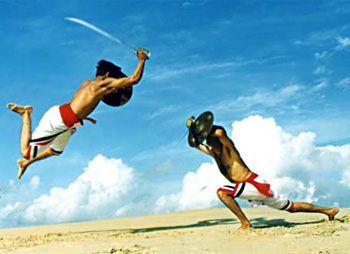
Like other branches of Sanskrit literature, treatises on martial arts become more systematic in the course of the 1st millennium AD. The martial art of Vajra Mushti was described in the Buddharata Sutra, written down by the 5th century. Indian military accounts of the Gupta Empire provide a vivid description of more than 130 different classes of weapons. Even Vatsyayana`s Kama Sutra mentions that women would often "practice with sword, single-stick, quarter-staff, and bow and arrow." Indian works of art, particularly in temple sculptures show warriors in positions related to the martial arts. According to the Sushruta Samhita written in the 4th century, 107 vital points exist in the human body out of 64 can prove lethal if struck properly with a fist or stick. This work has formed the basis of the medical discipline Ayurveda, which was taught alongside various Indian martial arts. Most of the organised art forms had developed into their present stages by the middle ages. With the establishment of Mughal rule in India, indigenous tactics like the Malla Yudha were combined with the Turkish and Mongolian styles of wrestling, leading to the emergence of pehelwani.
An enduring legacy of the Mughals regarding Indian martial arts was the introduction of the Talwar (scimitar). During the British era, martial arts went into decline due to the British ban on various martial arts, such as Kalaripayattu, a southern martial art that included strikes, grappling methods, weapons training and the striking of vital points to disable or incapacitate an opponent.
Most of the martial arts remained confined to rural areas, and the introduction of firearms and British systems of warfare eroded the need for traditional combat training. However, there was a resurgence of interest in Kalaripayattu in the 1920`s which also saw a revival of the other regional styles of combat.
Indian martial arts have gone through centuries of change, amendment and revival, and are now a highly sophisticated facet of Indian sportsmanship





